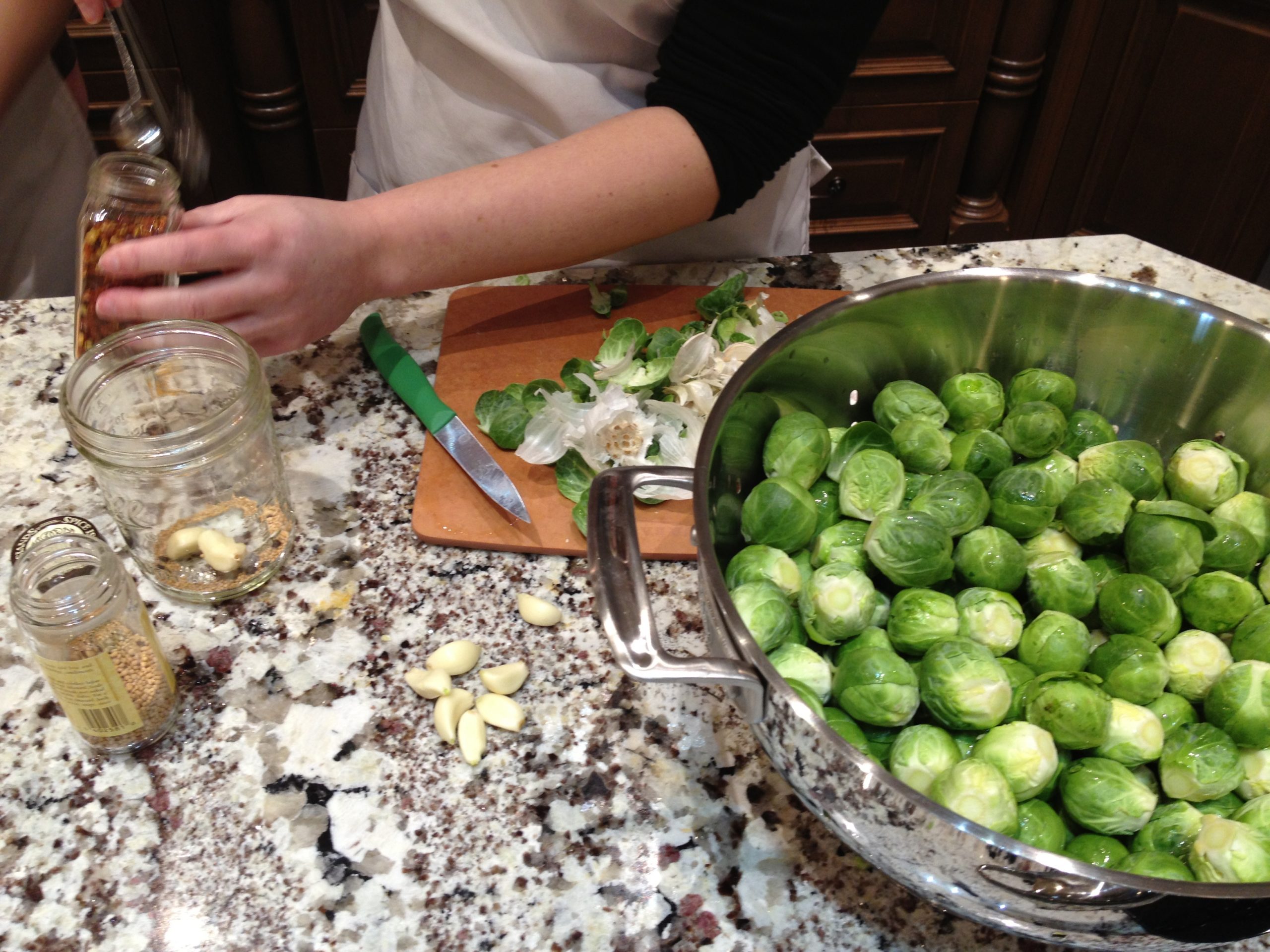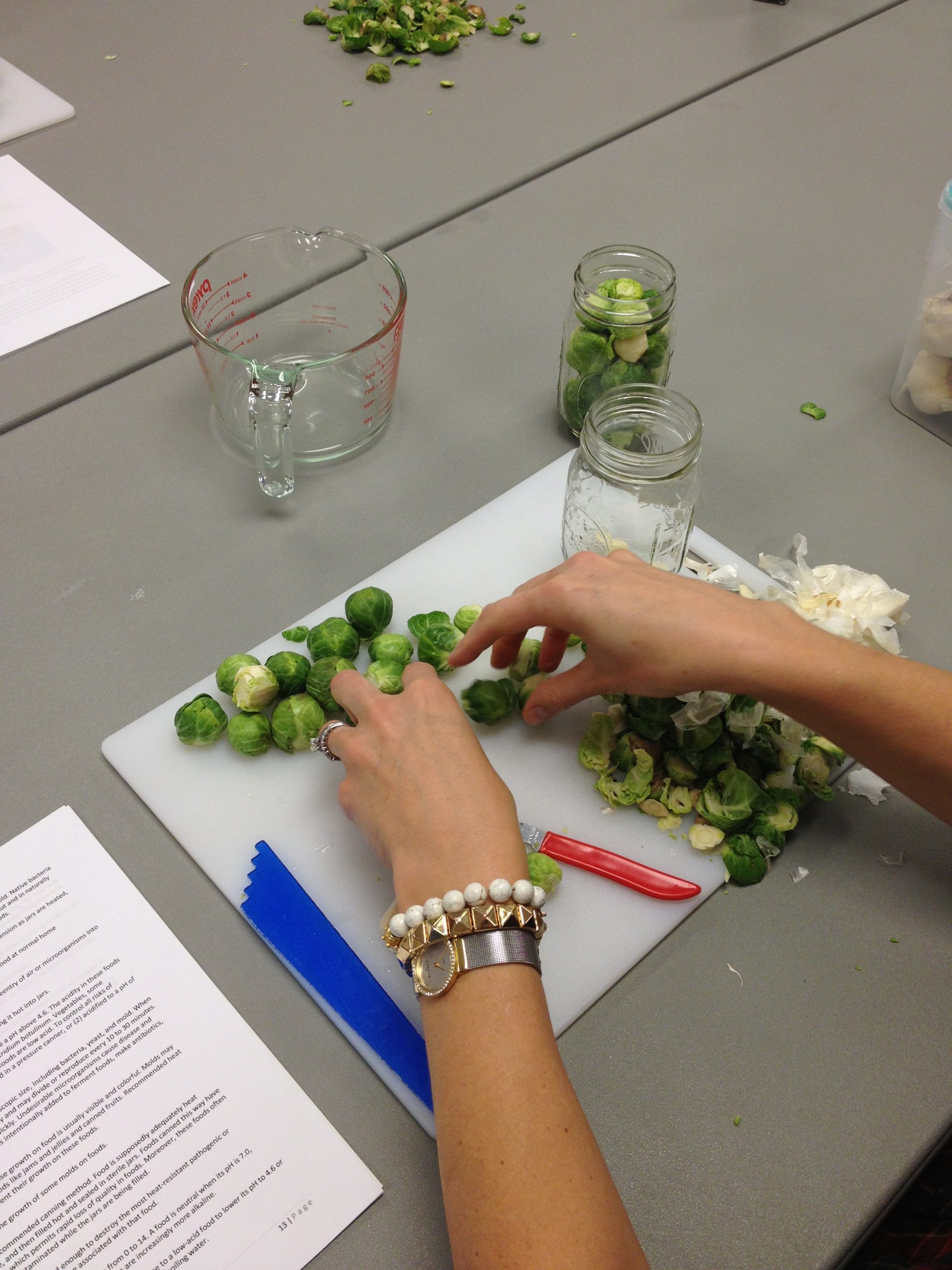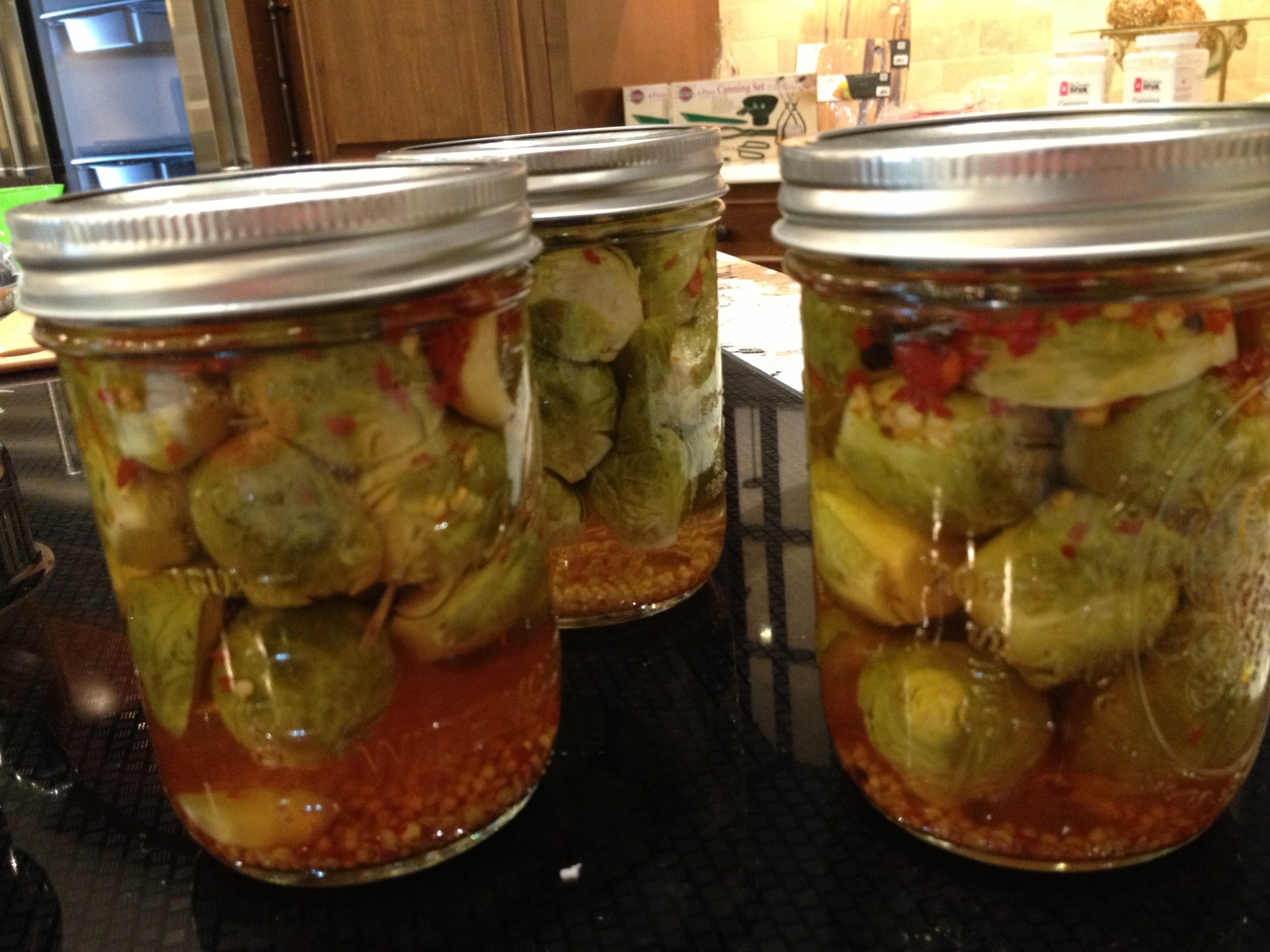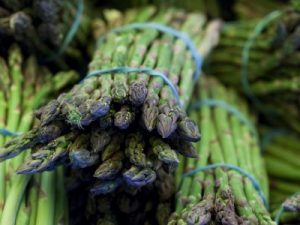Check this out!
 Typically in my canning classes after I break down the canning basics I get everyone involved in a hands-on recipe so they may practice what we discussed in class. One of my favorite canning recipes to share during this time is Pickled Brussel Sprouts!
Typically in my canning classes after I break down the canning basics I get everyone involved in a hands-on recipe so they may practice what we discussed in class. One of my favorite canning recipes to share during this time is Pickled Brussel Sprouts!
Yes, it is true, you can pickle just about anything! I often tell beginners the place to start when learning how to home can is pickling, not jam making. Pickling uses a brine ratio which is typically water, vinegar (an acid) and salt. Like baking, do not deviate from the brine ratio in a canning recipe, or you could cause the foods to spoil and grow harmful bacteria during storage.
Follow your recipe from start-to-finish and enjoy these pickled delicacies alongside sandwiches, on relish trays, atop salads and to compliment your favorite beverage, like a Bloody Mary.
Here is a fun pickling recipe to get you started…

Pickled Brussels Sprouts
Makes about 12 half-pints, 6 pints, or 3 quarts
Want to spice up your Bloody Mary or change up your pickles? Well there is no better way then surprising your guests with a couple of pickled Brussel sprouts. Even those who typically do not eat Brussels sprouts keep coming back for these dilled delights! Feel free to keep ‘em dilled or add a bit of heat using hot pepper flakes. These are also commonly referred to a “frog balls” amongst home canners.
Ingredients
- 6 cups white vinegar
- 2 cups water
- ½ cup pickling and canning salt
- 12 cloves of garlic
- 12 heads of fresh dill or 3 tablespoons dill seeds
- 2 tablespoons hot pepper flakes (optional – I like to make half the jars spicy and the other dill)
- 3 pounds fresh Brussel sprouts
Instructions
- Cut the base off each Brussels sprout and remove outer leaves. For large Brussel sprouts, you may cut them in half, or feel free to leave whole.
- In a large stainless steel stock pot, combine vinegar, water and salt. Stir well and bring to a boil over medium-high heat, stirring to dissolve the salt.
- Add the garlic cloves, dill, and hot pepper flakes, if using, to each jar. For quarts add four fresh dill flowers or 1 tablespoon of dill seeds, four garlic cloves, and 1 tablespoon of pepper flakes, if using, to each jar. For pints, add two fresh dill flowers or 1 teaspoon of dill seeds, two garlic cloves, and 1 teaspoon of pepper flakes, if using, to each jar. For half-pints, add one fresh dill flower or 1/2 teaspoon of dill seeds, one garlic clove, and 1/2 teaspoon of pepper flakes, if using, to each jar.
- Next, raw pack the the Brussels sprouts into each jar leaving a 3/4-inch headspace. Be sure to fit them in strategically so you get as many Brussel sprouts in each jar as possible.
- Ladle hot brine into jars to a 1/2-inch headspace. Remove any trapped air pockets using your canning utensil or by gently tapping the jar onto a cutting board. Add additional brine if necessary to maintain the 1/2-inch headspace.
- Tip: If you run out of pickling liquid, use half the parts listed above, boil and fill jars accordingly. Never fill your remaining jars with just water – it will lessen the acidic level and cause food to spoil.
- Using a warm wash cloth dipped in vinegar, wipe each rim and screw bands. Place lids and rings on each jar and hand tighten.
 Place jars in water bather and fully cover with warm/hot water. Process the half-pint and pint jars for 10 minutes, quart jars for 15 minutes. Remember, processing time doesn’t begin until the water is at a full rolling boil.
Place jars in water bather and fully cover with warm/hot water. Process the half-pint and pint jars for 10 minutes, quart jars for 15 minutes. Remember, processing time doesn’t begin until the water is at a full rolling boil.
After your timer goes off, remove the canner lid and let the jars rest 5 minutes in water bather before removing to cool.
Happy Canning!
xo
Diane, The Canning Diva®


